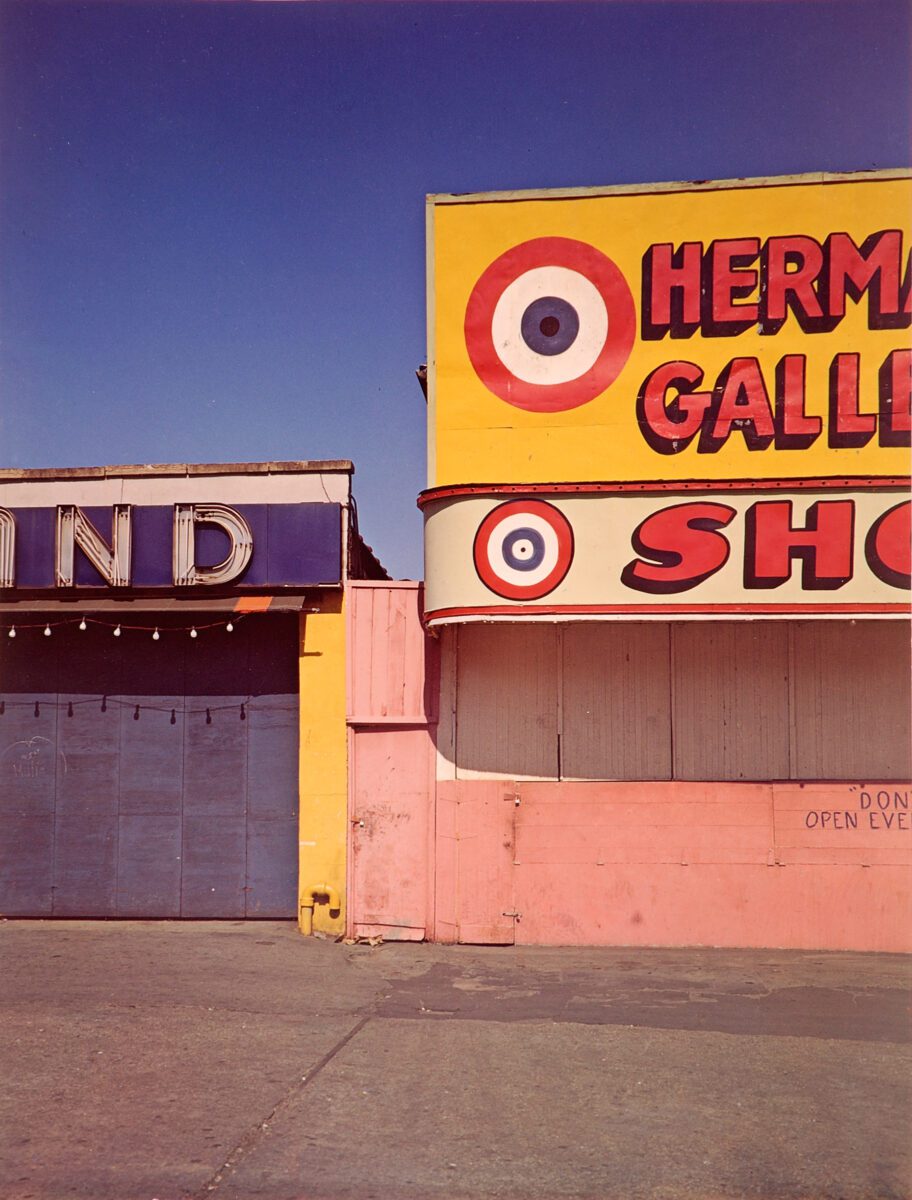What does it take to become “the most famous unknown photographer in America”? The title has been given to Evelyn Hofer (1922-2009), an artist whose pioneering colour snapshots are, in fact, recognised the world over. She recorded everyday life in Europe and North America during the 1960s and 1970s. Now, in 2021, two exhibitions from the Deutsche Börse Photography Foundation offer insights into her oeuvre, establishing connections with nine of her female contemporaries.
Born in Germany in 1922, Hofer’s family left in 1933, the year of the Nazis’ ascendance to power. She grew up in Spain and Switzerland – where she received early training as a photographer – before emigrating to Mexico in 1942, finally arriving in New York at the close of the Second World War. Establishing a client base amongst fashion magazines such as Harper’s Bazaar and Vogue, she became familiar with the slick marketing and graphic design aesthetics of midcentury America. But her passion lay in capturing honest and informal scenes of everyday life across the streets of Washington, New York, London and Dublin.
Hofer has been seen as an heir to the German artist August Sander (1876-1964), whose era-defining photography project People of the 20th Century (1929) offered a typology of different social classes, occupations, ages and ethnicities in his native Germany. An expansive sequence of minimally staged yet intimate portrait photographs, the publication was divided into categories such as “The Farmer,” “The Craftsman,” and “The Big City.” Hofer took the same impetus to document humanity in all its variety and infinite value. She expanded the project to encompass metropolitan centres across the world, whilst also bringing a more informal quality of staging. Crucially, she was also an early and skilled adopter of colour photography, which enters her work in the 1960s.
Hofer’s shots show a plethora of humanity: from a miner in Wales to African American church-goers in Harlem, a little girl on her bike in Dublin, a motorbike-riding policeman in Washington, waitresses and hatmakers in London. Hofer always set her subjects in locations familiar to them so that, in her words, their “inside value” could show through. She also prepared and thought through every shot meticulously in advance, using a cumbersome media-format camera mounted on a tripod; the apparently unforced intimacy of her shots is all the more remarkable for this reason. For much of her life Hofer worked without much acclaim or fanfare, leading art critic Hilton Kramer to describe her as “the most famous unknown photographer in America.” Deutsche Börse Photography Foundation presents 67 iconic images.
Running concurrently, the gallery presents another show: Female Perspectives from Vivian Maier to Barbara Klemm. It showcases work by nine female artists from the Art Collection Deutsche Börse who were active during the same period as Hofer. Diane Arbus, Sibylle Bergemann, Barbara Klemm, Ute Mahler, Vivian Maier, Susan Meiselas, Helga Paris, Mimi Plumb and Christine Spengler documented scenes of everyday life with a similarly vivid intensity, exploring the intersection of political, social and domestic experience across a range of locations and life circumstances, and from a range of stylistic perspectives.
Evelyn Hofer: Encounters with the Camera and Female Perspectives from Vivian Maier to Barbara Klemm run at the Cube in Frankfurt/Eschborn until 21 January 2022. Find out more here and here.
Words: Greg Thomas
Image Credits:
1. Evelyn Hofer, Harlem Church, New York, 1964 © Evelyn Hofer / Galerie m Bochum
2. Evelyn Hofer, Girl with Bicycle, Dublin, 1966© Evelyn Hofer / Galerie m Bochum
3. Evelyn Hofer, Coney Island, New York, 1965 © Evelyn Hofer / Galerie m Bochum
4. Evelyn Hofer, Soldier in Uniform with Girlfriend, from the series “Just Married”, New York, 1974 © Evelyn Hofer / Galerie m Bochum









